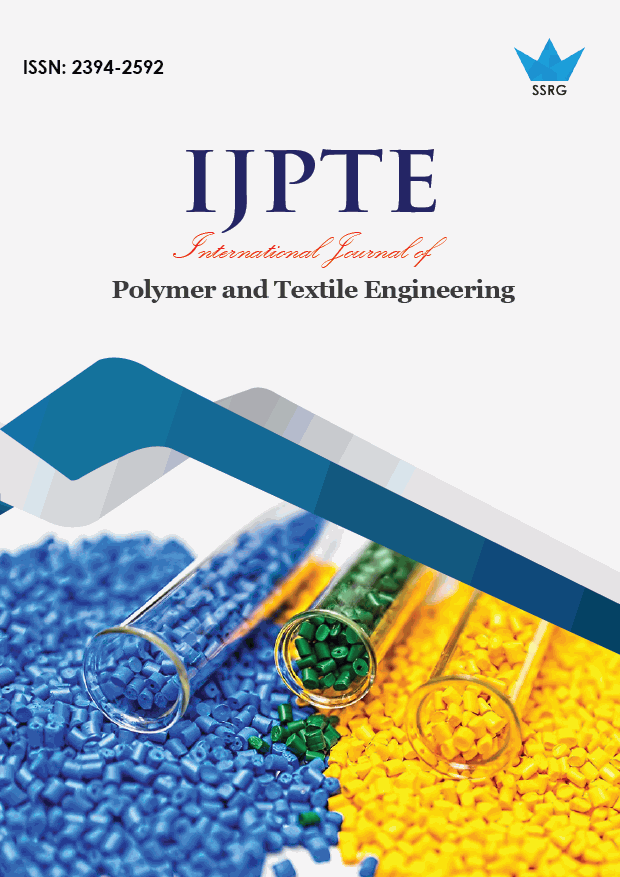Consequence of Bend and Weft Variables on Fabric’s Shrinkage Ratio

| International Journal of Polymer and Textile Engineering |
| © 2015 by SSRG - IJPTE Journal |
| Volume 2 Issue 1 |
| Year of Publication : 2015 |
| Authors : Grace, Darlene |
How to Cite?
Grace, Darlene, "Consequence of Bend and Weft Variables on Fabric’s Shrinkage Ratio," SSRG International Journal of Polymer and Textile Engineering, vol. 2, no. 1, pp. 1-4, 2015. Crossref, https://doi.org/10.14445/23942592/IJPTE-V2I1P101
Abstract:
This investigation deals with the fabric’s shrinkage ratio in both directions that is warp and weft), by grinding the effect ofeach of the warp and weft variables on the shrinkage ratio. These variables are the type, thickness, Yarntension andthe count of both warp and weft yarns in calculation to the weave structure. Afterwards test dissimilar types of these variables and establish that weft density relationship and weft count with shrinkage ratio toward warp is a positive relationship, while the connection shows the amount of weave float and Yarn tension of both warp and weft strand with shrinkage ratio towards warp is an inverse relationship. The warp thickness and warp count with shrinkage ratio towards weft relationship is a positive relationship, while the connection shows the amount of weave float and Yarn tension of both warp and weft thread with the shrinkage ratio towards weft is aninverse relationship. Finally, there is no consequence to the type of weave as if it was a satin or twill on the quantity offabric shrinkage in both directions. Using the SPSS statistical software solutions have been modeling the previous results and get the formula to calculate the fabric shrinkage ratio that takes into account all preceding variables.
Keywords:
Fabric’s shrinkage ratio; Fabric’s actual length; Warp andweft variables.
References:
[1] Lord M (1982) Weaving conversion of yarn to fabric.
[2] Watson W (1955) Advanced textile design.
[3] Nisbet H (1980) Grammar of textile design.
[4] Moghe A (2002) Study and characterization of small diameter woven tubularfabrics.
[5] Edita M (2008) Investigation of Linen Honeycomb Weave Fabric ShrinkageAfter Laundering in Pure Water, Kaunas.
[6] Çeven E, Özdemir Ö (2006) Using Fuzzy Logic to Evaluate and Predict ChenilleYarn’s Shrinkage Behavior, Bursa.
[7] Sirková B, Vyšanská M (2012) Methodology for Evaluation of Fabric Geometryon the Basis of the Fabric Cross-Section, Liberec.
[8] Milašius A, Milašius V (2008) New Representation of the Fabric Weave Factor,Kaunas.
[9] Gabrijelčič H, Černoša E, Dimitrovski K (2007) Influence of Weave and WeftCharacteristics on Tensile Properties of Fabrics, Ljubljana.
[10] Malčiauskienė E, Rukuižienė Z, Milašius R (2008) Investigation of LinenHoneycomb Weave Fabric Shrinkage After Laundering in Pure Water, Kaunas.

 10.14445/23942592/IJPTE-V2I1P101
10.14445/23942592/IJPTE-V2I1P101